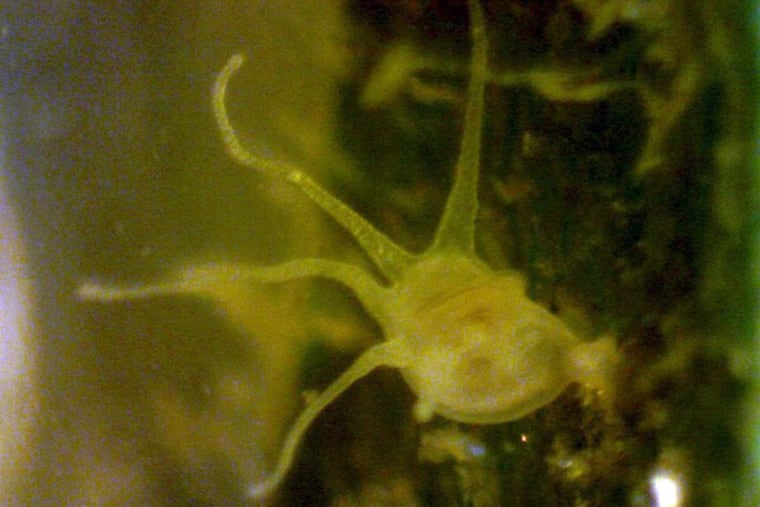New Jersey reminds swimmers: Watch out for clinging jellyfish in bays and estuaries
Clinging jellyfish thrive in shallow, slow-moving waters. They can cause excruciating stings.

If you’re headed to one of New Jersey’s coastal beaches and plan to take a dip, you can relax.
But if you’re taking a dip in other coastal waterways, the state has a message for you: Be cautious of clinging jellyfish that cause excruciating stings through thousands of barbed stingers attached to their tentacles.
The New Jersey Department of Environmental Protection is reminding the public that clinging jellyfish, first confirmed in the state in 2016, are still found in some bay and estuarine waters of New Jersey.
Because clinging jellyfish thrive in shallow, slow-moving waters, it’s highly unlikely you’ll encounter them in the ocean.
The clinging jellyfish can be as small as a dime or large as a quarter and are marked as adults by a reddish-orange to yellowish cross within their translucent bodies that attach to algae or marine vegetation such as eel grass.
That’s why the invasive species is more likely found in estuarine areas — meaning bodies of water found where rivers meet the sea, such as bays, sounds, and coastal rivers that contain the vegetation.
They have been found in a salt pond in North Wildwood adjacent to Hereford Inlet Lighthouse, in Lower Township Thorofare (a type of coastal waterway), and in the Cape May National Wildlife Refuge. They are typically found from mid-May to late July, or until bay water temperatures reach or exceed 82 degrees Fahrenheit.
For example, 10 clinging jellyfish were found May 31 at the Cape May National Wildlife Refuge, which is within the Cape May peninsula, New Jersey’s southernmost point.
» READ MORE: Clinging jellyfish, known for excruciating stings, found in North Wildwood salt pond near inlet
The DEP says the species is native to the Pacific Ocean, not the East Coast. Clinging jellyfish likely attached themselves to ship hulls and hitched rides to spread. They can be found from Maine to New Jersey.
The DEP says it is monitoring populations using DNA, and the species seems persistent in making a home in New Jersey.
“Fortunately, populations of clinging jellyfish and their distribution have been largely stable since the species was first confirmed in New Jersey in 2016,” DEP Commissioner Shawn M. LaTourette said in a statement. “However, clinging jellyfish pack such a potentially powerful sting that it is important for the public to be vigilant and take precautions when recreating in coastal bays and rivers where they are found.”
If you are stung by a clinging jellyfish:
Rinse the area with saltwater and remove any remaining tentacle parts using gloves, a plastic card, or thick towel.
Seek medical attention if symptoms persist or pain increases.
The public can find confirmed clinging jellyfish locations on the NJ Clinging Jellyfish Interactive Map by the DEP and Montclair State University.
If you do encounter a clinging jellyfish, don’t touch it, and leave the area. If possible, take a photo and send GPS coordinates to the DEP at joseph.bilinski@dep.nj.gov.